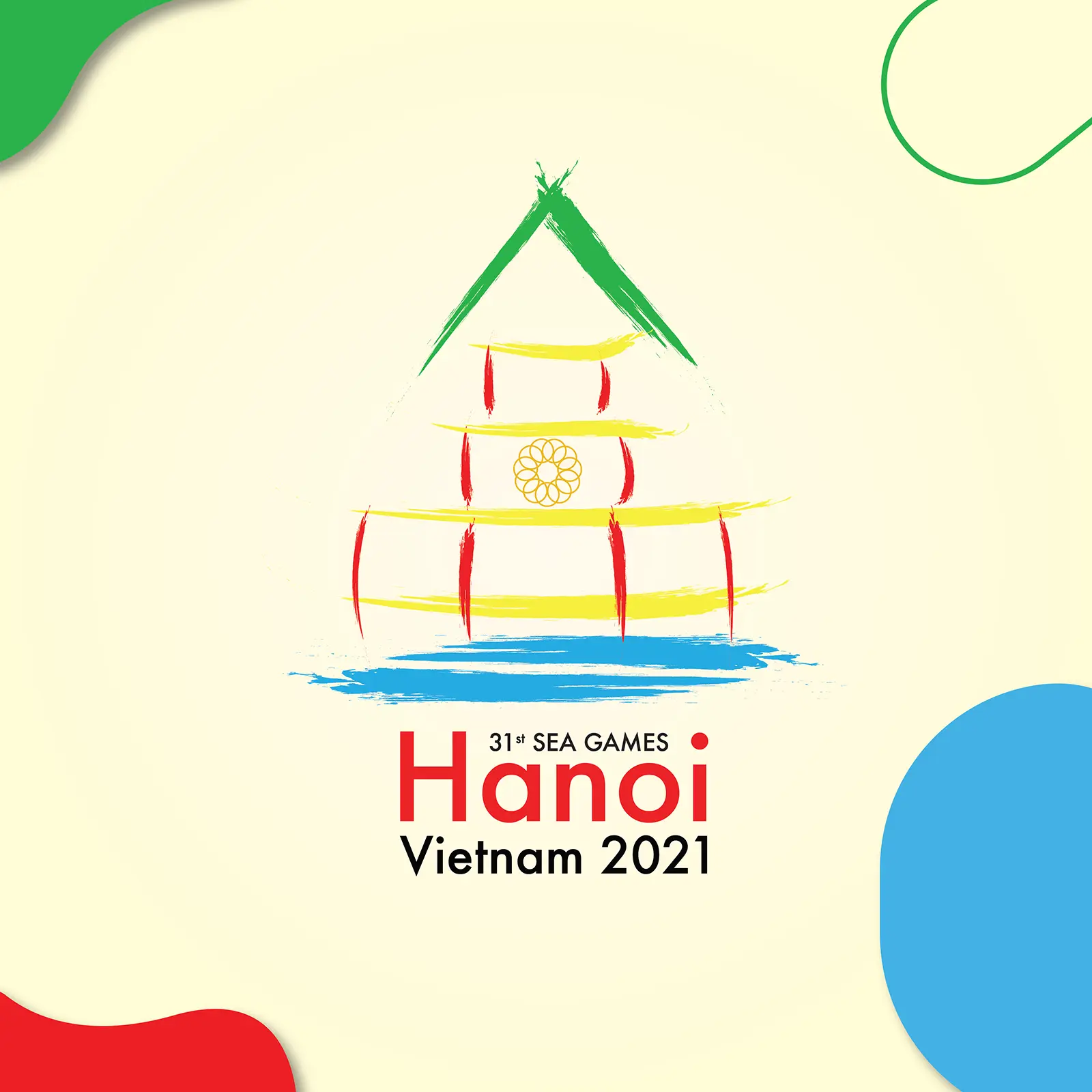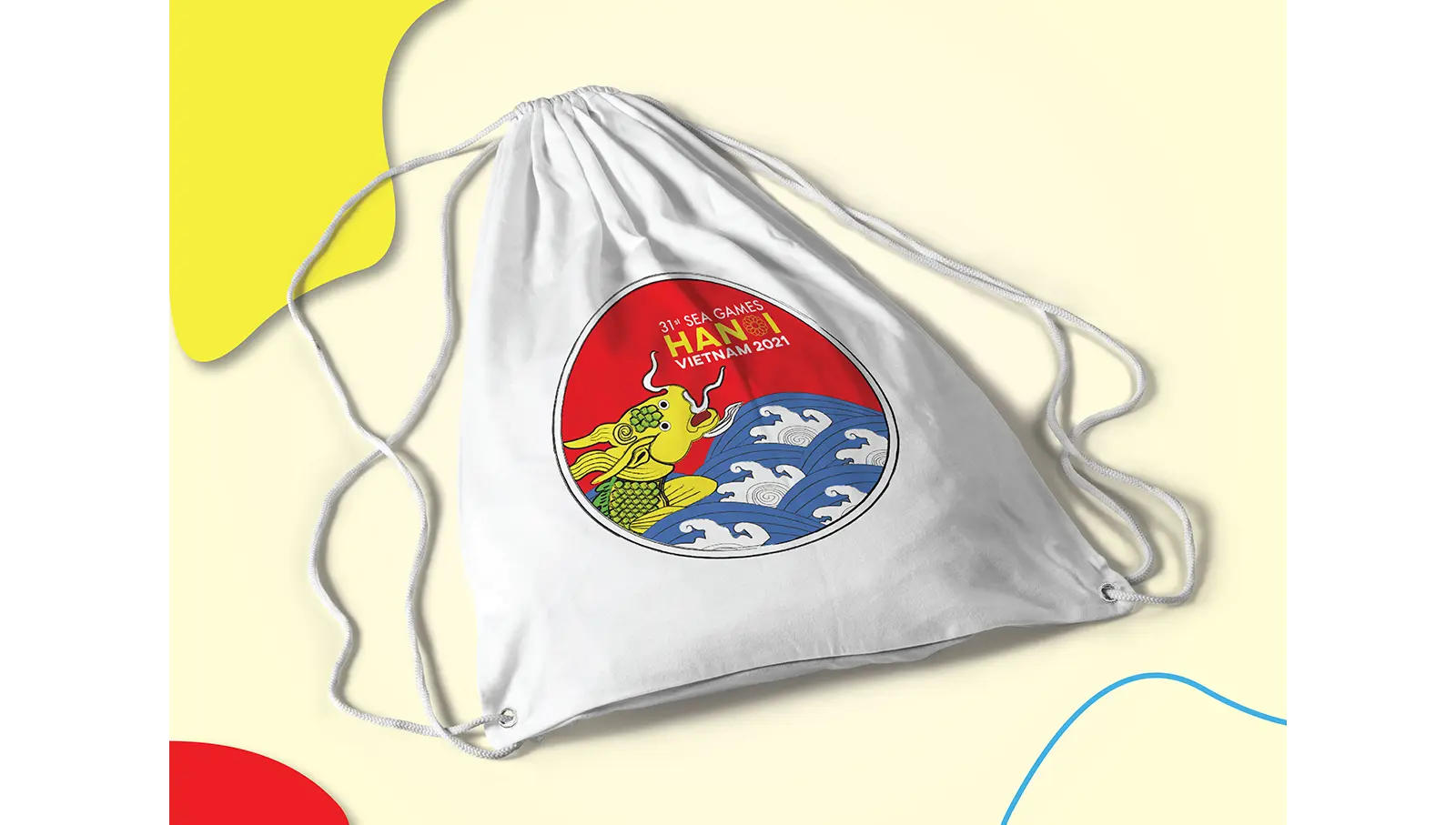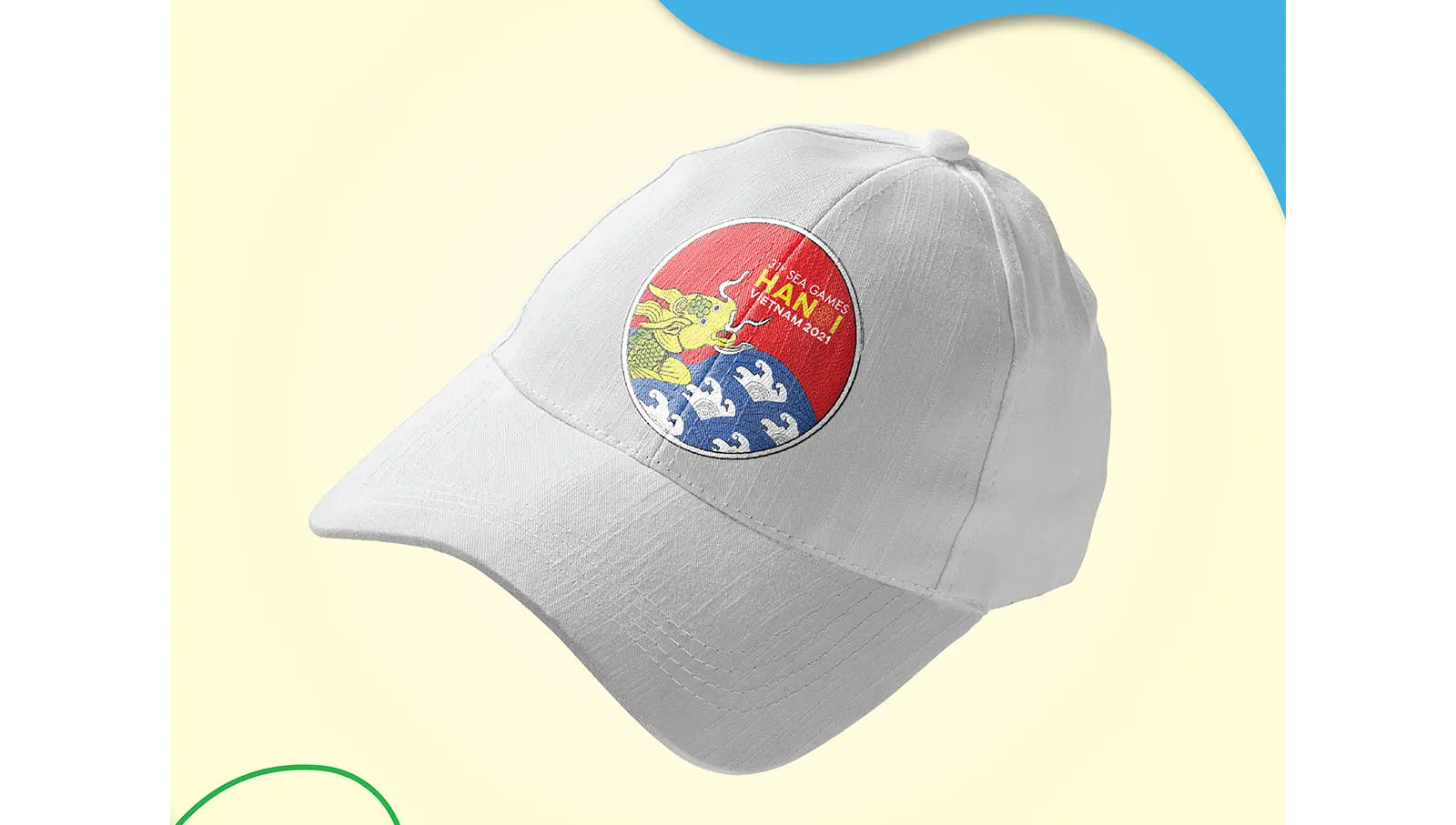SEA games Logo
Hanoi, capital of Vietnam
This is the city chosen to host the 31st Southeast Asian Para Games and 11th ASEAN Para Games.
The competition was created on 22 May 1958 by 6 founding countries: Thailand, Burma, Cambodia, South Vietnam, Laos and Malaysia. The first edition took place in Bangkok in 1959 and brought together 527 athletes participating in 12 sports.
To date, 21 countries are taking part, with around 56 sports and almost 5,000 athletes. Most of the sports are inspired by the Olympic Games, but some are imported from local cultures such as dragon boat racethe Kenpō or the Sepak Takraw.
For the Hanoi Games, the organisers decided to create a competition to choose the slogan, mascot and logo. As we wanted to take part, we decided to propose a logo for the event.


First proposal, the legend of the Koi carp
An ancient Asian legend says that when the heavens and the earth were newly formed, it was God who created the rain and the wind, as well as the creatures living in the water, which are the source of everything.
Busy creating people and objects, the rain had stopped. So God sent the dragons, a celestial animal, to fly through the air and spray water on the earth to create rain. However, there weren't enough dragons in the sky, so it couldn't rain everywhere. This is why a competition to select new dragons was created, called the "Dragon Competition".
When the celestial decree was pronounced, King Thuy Qi, who supervised the underwater work, announced to all the species living there that they could compete. The principle was simple: the creature talented enough to make it through three waves would become a Dragon.
Within a month, many ocean species were wiped out, as none of them survived the three waves.
A pole jumped over the first wave but missed the second.
There were two prawns jumping over two waves, about to succeed, but when the third wave came, exhausted, they broke their backs.
In turn, a carp arrived in the competition, this particular fish was really rare as it contained a pearl in its mouth ...
The god of the wind thought this was strange and came to see it. The wind and clouds then rushed in their turn, which is why the thunder and sky naturally followed each other ...
The carp was lifted by the first wave, flying over the three waves at once, releasing the pearl as it crossed Vu Long Mon and then transformed into a dragon.
Since then, the carp has become a dragon, symbolising courage, luck, success and victory!
All ordinary carp would love to cross Vu Long Mon, because they know that once they have crossed this gate, they will change from ordinary carp to sacred dragon: they will escape from the world and live forever. But not all carp have a brilliant and precious nature (and carry a jewel in their body) and not all carp have the ability to overcome difficulties and succeed!
The carp has transformed itself into a water dragon that has made the soil fertile, turned trees green and brought vitality to all species. Waving its tail, beard and naturally growing horns, the shape of the koi carp appears majestic, radiant and a symbol of the desire of people around the world.
As a result, people often regard the image of the dragon carp as a symbol of peace and prosperity. It encourages education, examinations, recognition and good luck in business.
Second proposal: the Ho Guom lake in Hanoi
meaning "lake of the sword".
Ho Hoan Kiem (Ho Guom) is not only a cultural and historical symbol, but also a destination of choice for Vietnamese and tourists visiting Hanoi. The lake is part of the old city.
Legend has it that in early 1428, the emperor Le Loi (pronounced Le Loy), at the start of his fight against the Chinese, received a golden sword from a fisherman fishing in the lake.
After a ten-year campaign, and having successfully repelled the Chinese, he crossed the same lake. A tortoise appeared and claimed the golden sword in the name of the Dragon King, the legendary ancestor of the Vietnamese people.
The Law then understood that the sword was a favour from heaven to fight the Chinese. Since this event, the lake has been called Ho Hoan Kiem, which means "the lake of the restored sword", and the surrounding area is constantly decorated.
In the middle of the lake, you can see a square-shaped stupa honouring this sacred animal. Here we can also observe soft-shelled turtles, a species known as the rafetus swinhoei, since the 15th century.
Today, Hoan Kiem Lake bears witness to the formation and development of the capital of Hanoi and thousands of years of culture, with many ups and downs.
Nguyen Khuyen wrote a poem about this 100 years ago:
Hanoi has the sword lake
Blue as ink
By the lake, a tower in the shape of a pen
Writing poetry in the sky.



